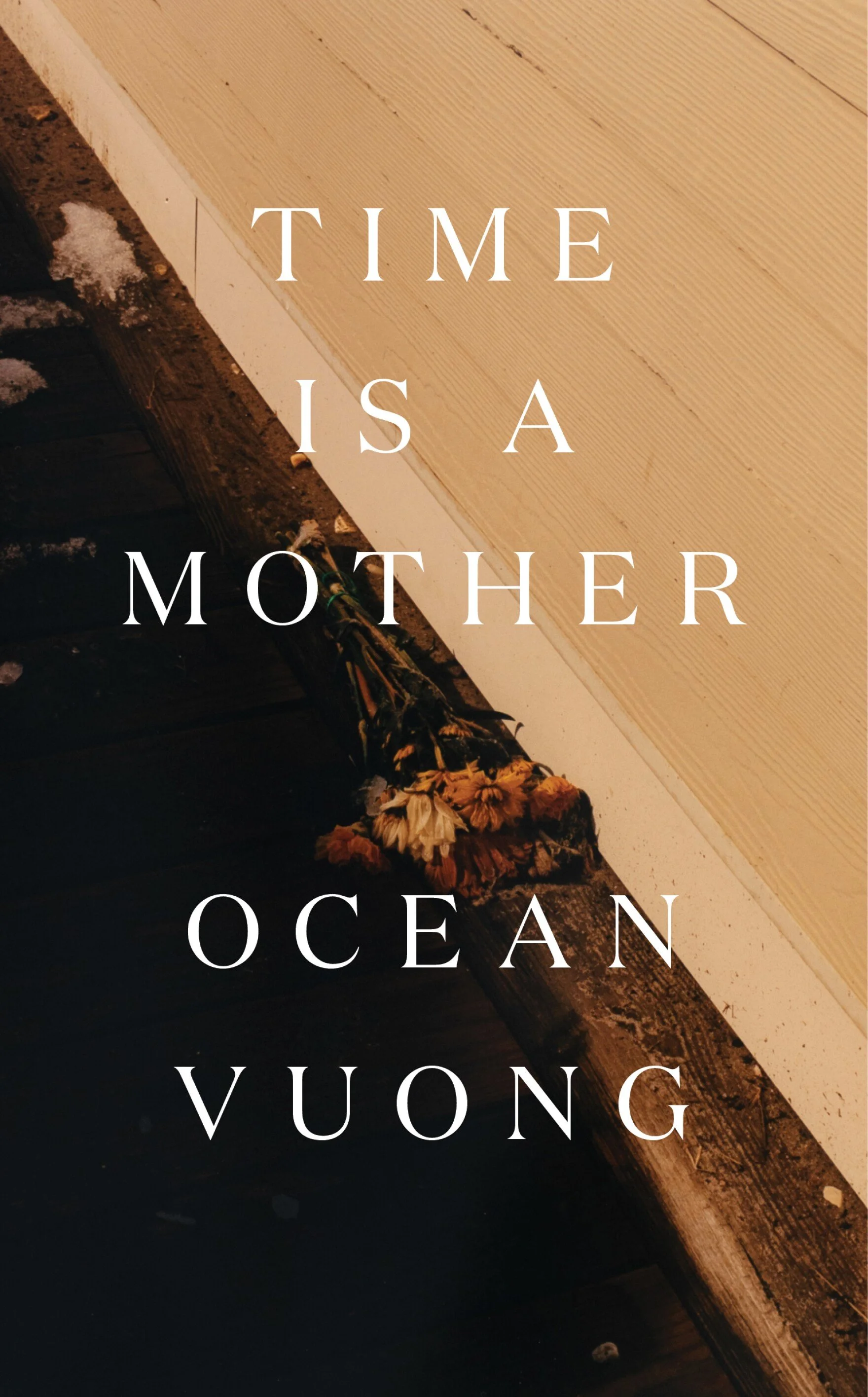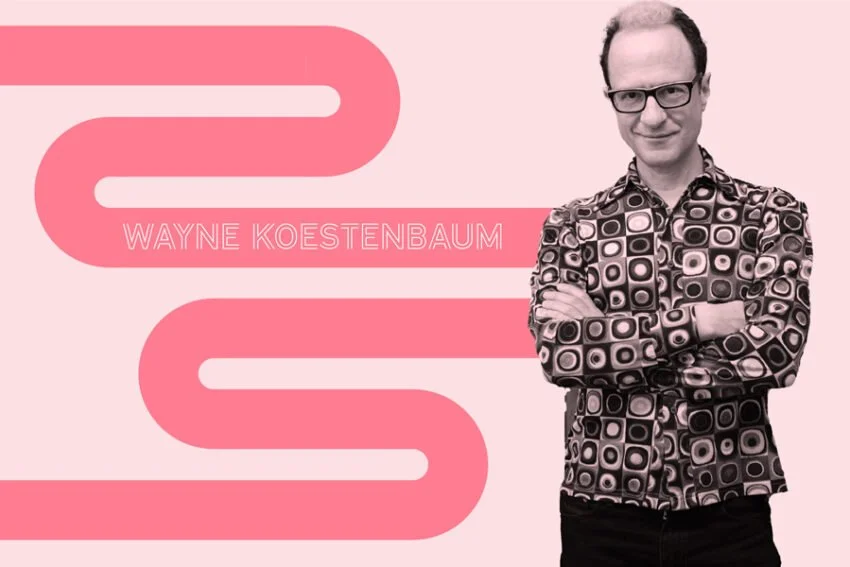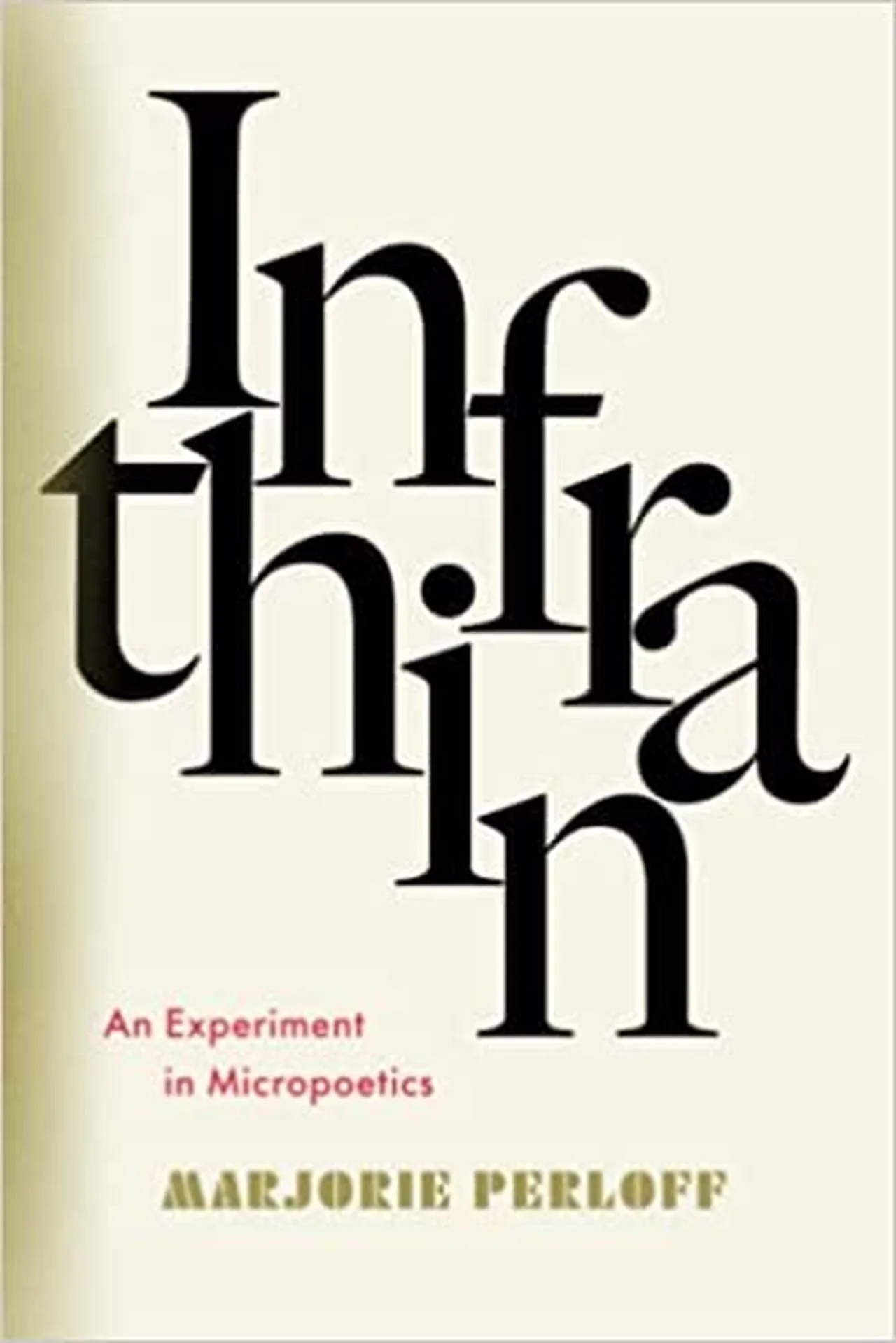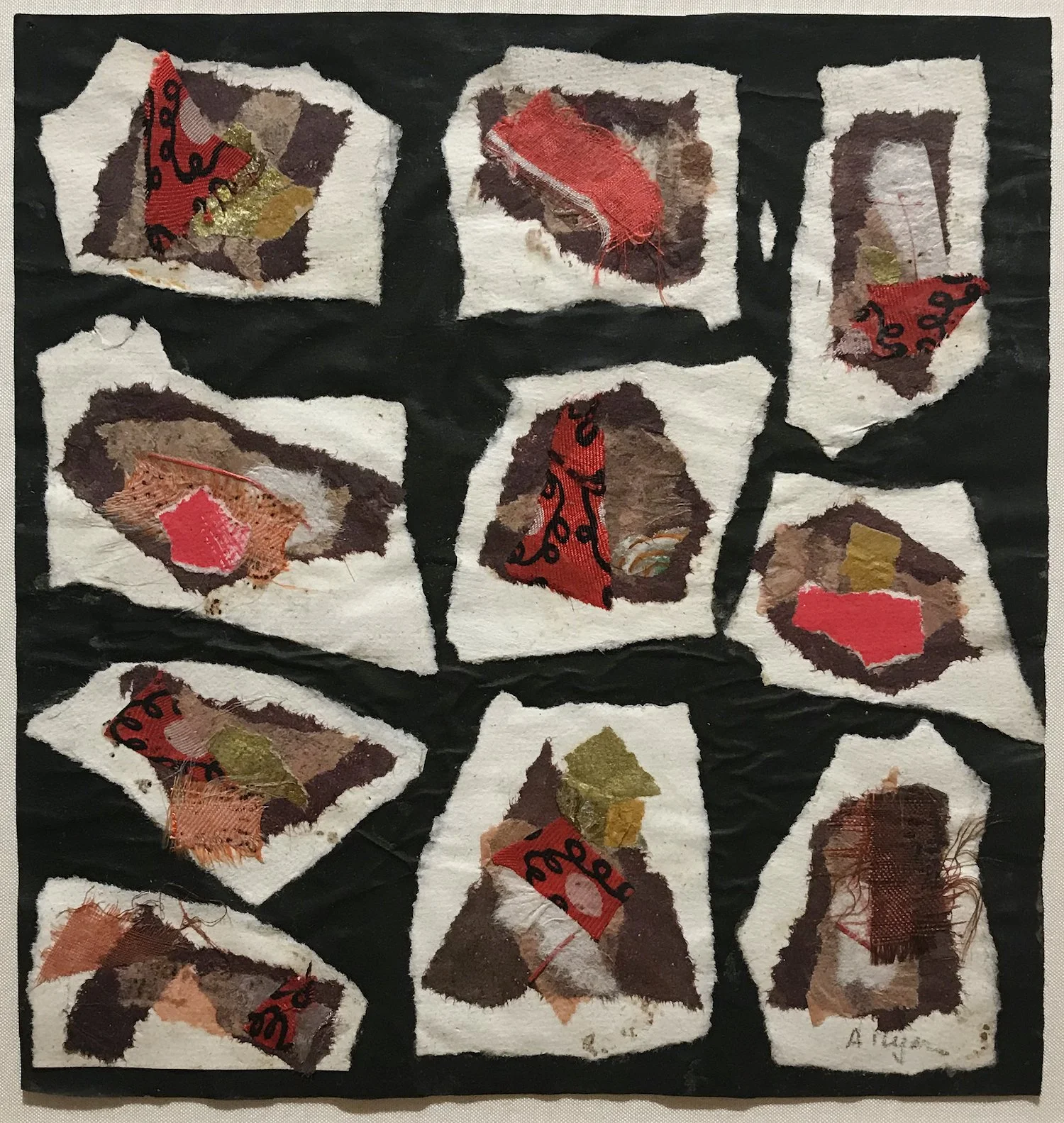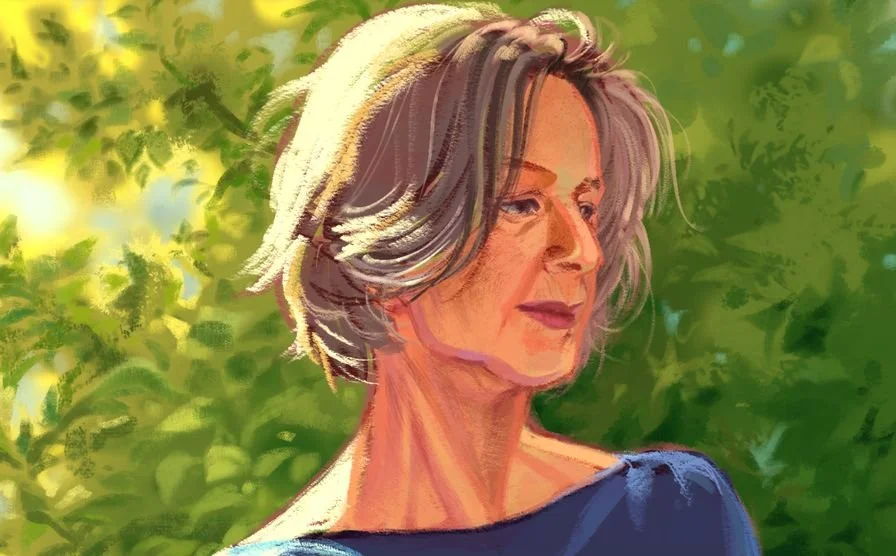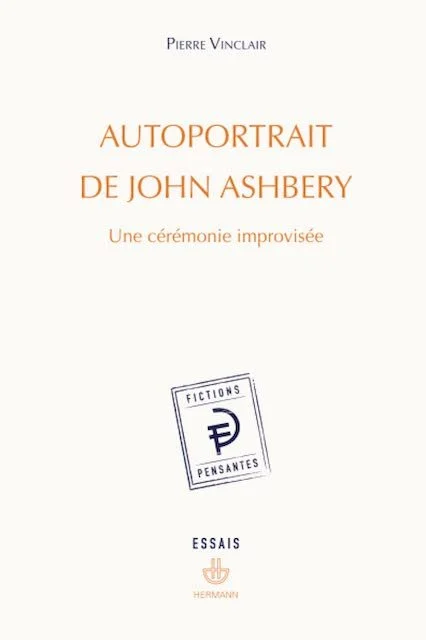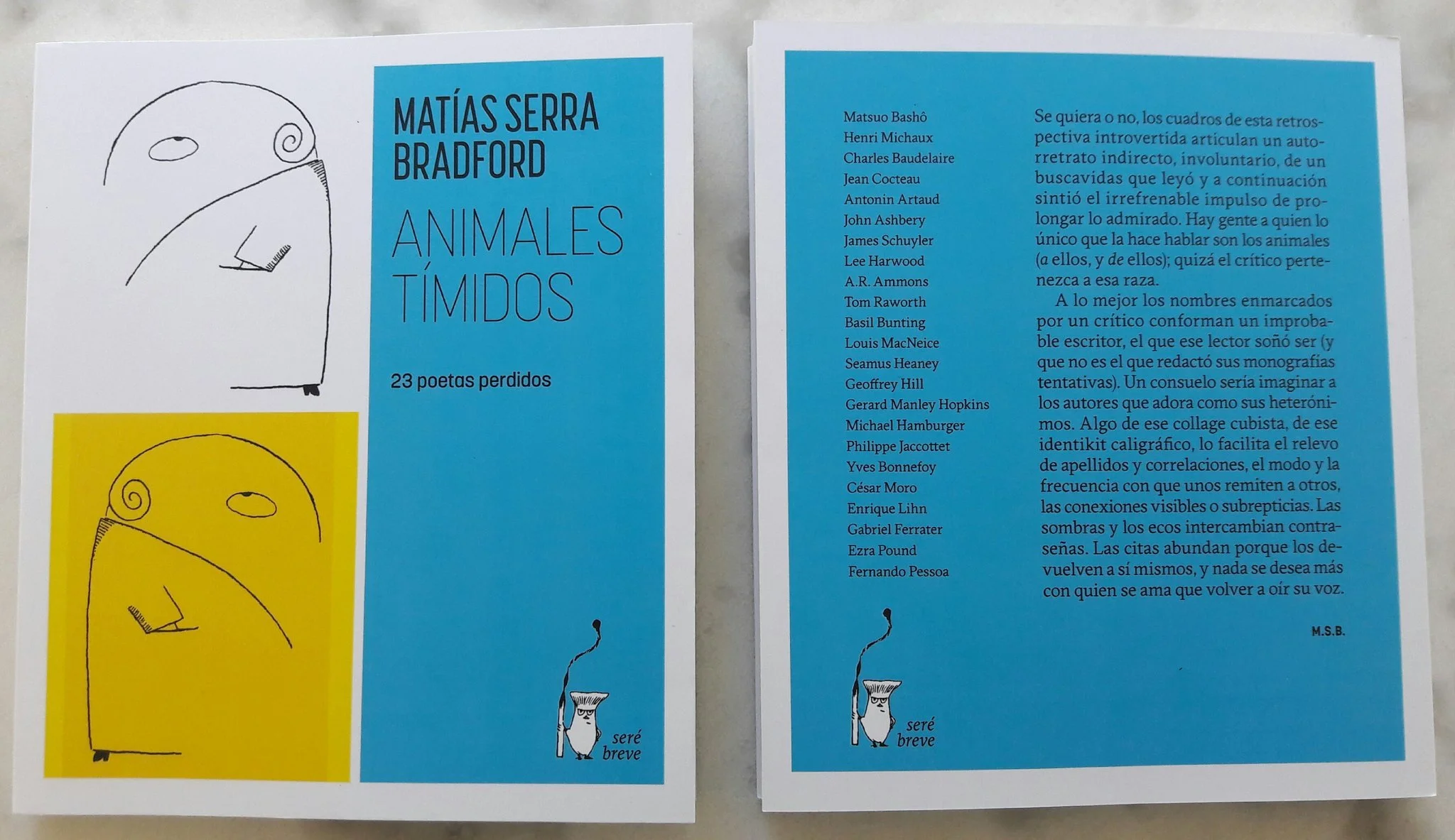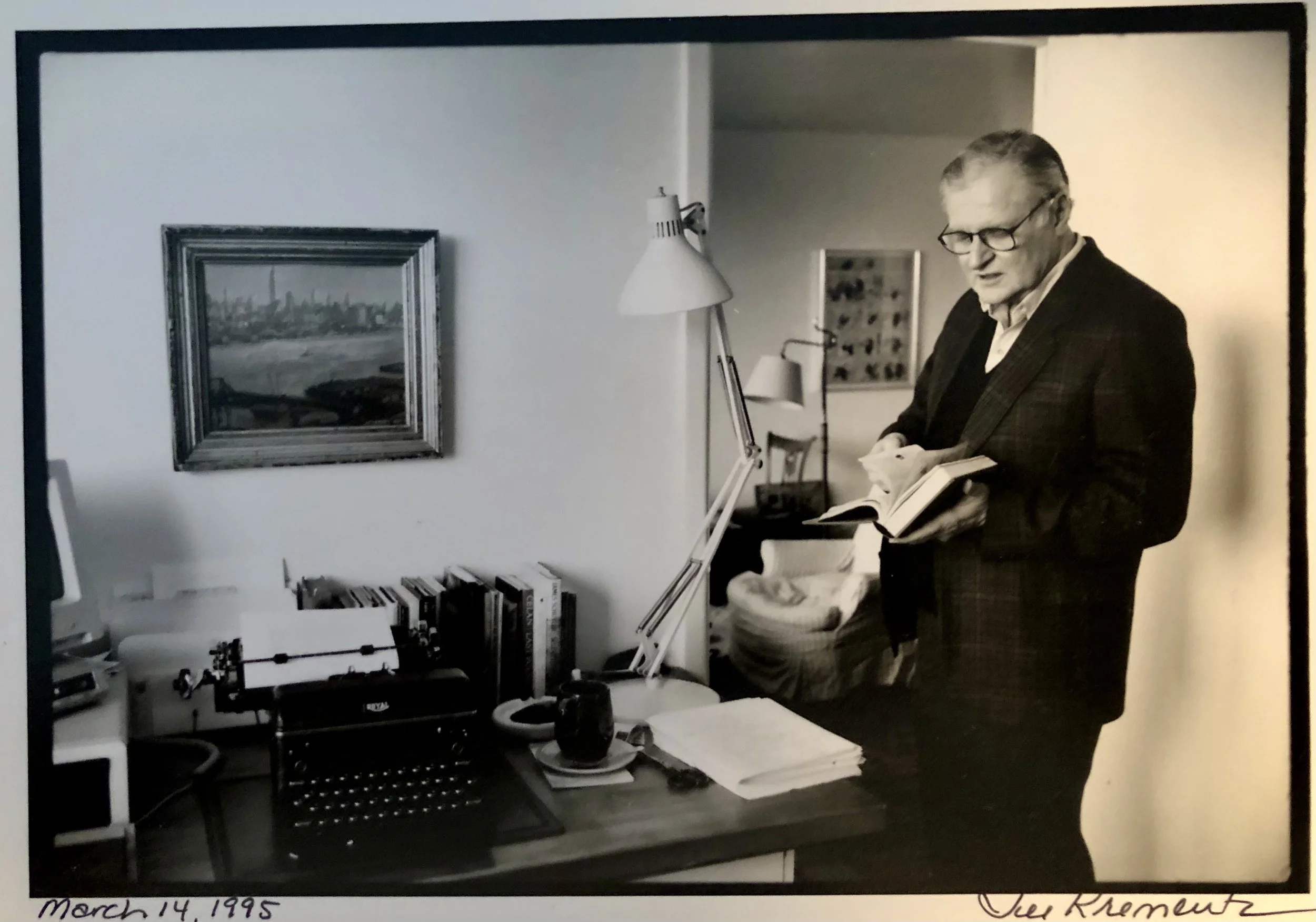Ms. Plessner, of Catbird, has enjoyed asking Mr. Giallo about her art heroes, like Frank O’Hara. Mr. Giallo knew him in passing, “but there was another poet who I was very dear friends with,” he said. “Have you heard of John Ashbery?” . . .
Read More'TIME IS A MOTHER' - POET OCEAN VUONG REFLECTS (NPR)→
/poetic tradition, bringing to mind John Ashbery's Paradoxes and Oxymorons. Vuong's portrait of Hồng is both intimate and iconic, evoking Rilke's "irreplaceable, perfect rose" — "a supple spoken word / framed by the text of things." By addressing Hồng in "Dear Rose," Vuong also reaches out to us who, in reading his work, become his mother, the poem, and his community through space and time. . .
Read MoreINTERVIEW WITH WAYNE KOESTENBAUM (The Yale Review)→
/“Fudged” is a perfect Ashbery word: its commonness, filth, and quaintness. Its “u” takes on the “u” of the preceding “muted,” and deepens—lengthens the “u” into a more vulgar sound—what goes by the name of bassesse (lowness), a word that Rosalind Krauss took from Georges Bataille and made the most of. In composing the trance trilogy, I was aiming for detours into bassesse, too—or, rather, I accepted the eruptions of bassesse whenever I was lucky enough to receive their calling card. . .
Read MoreJOAN MITCHELL'S ODE TO SPRING (Frieze)→
/A strong connection to poetry runs throughout Mitchell’s work. Not only useful as a metaphor for understanding her abstract art, poetry was also at the heart of many of the artist’s close friendships. Vitrines displaying photographs, postcards, sketch pads and other ephemera drive this point home. In one such case, a copy of Frank O’Hara’s Meditations in an Emergency (1957), dedicated by the author to Mitchell, appears alongside John Ashbery’s The Poems (1960), which features reproductions of the artist’s screenprints. . . .
Read MoreSUPER-CLOSE READING: ON MARJORIE PERLOF'S "INFRATHIN" (LA Review of Books)→
/In the words of Ashbery, the topic of translation is present (and absent) in Perloff’s book “[s]ometimes and always, with mixed feelings.” Translation surfaces at several junctures in Infrathin — as a critical tool, for instance, in the analysis of Stein’s stanza mentioned earlier or when Perloff compares three English translations of Baudelaire’s famous “Le Voyage” to illustrate the infrathin shades of the original French. . .
Read MoreREADING ANNE RYAN'S POETIC COLLAGES (Hyperallergic)→
/In the annals of postwar New York art, collage artist Anne Ryan is inaccurately described as the prolific poet of the 1920s who gave up verse to make visual art in the 1940s and ’50s. It’s undeniable that Ryan’s visual art — especially her collages — established her prominence in the final two decades of her life, a legacy honored on the 20th anniversary of her death, in 1974, with a solo exhibition at leading American museums. . .
Read MoreASHBERY SIGHTING: NEW EXHIBIT AT CARRIE CHEN GALLERY (The Berkshire Edge)→
/In conceiving of this exhibition, Ginzburg and Kruse refer to Ashbery, whose unharnessed approach to style and composition inspired them and is reflected in their work. The show borrows its title from the first line of Ashbery’s poem “Spring Light,” an example of the poet’s fractured style and fluid approach to constructing prose. . .
Read MoreTHE IRONY OF FATE: ON THE MYSTERY OF JOHN ASHBERY'S POSTHUMOUS WORK (The Nation)→
/Parallel Movement of the Hands is the first selection of Ashbery’s poetry to appear since his death on September 3, 2017. Edited, introduced, and annotated by the poet Emily Skillings, who was his assistant, the volume is composed of “five unfinished longer works.” The earliest, “Sacred and Profane Dances,” three prose poems on the Parable of the Ten Virgins (Matthew 25: 1–13) probably dates to the early 1950s, before the publication of Ashbery’s Yale Younger Poet’s Prize–winning debut, Some Trees. . .
Read MoreASHBERY SIGHTING: BOOKS, PUNKS, YEARS (Perfil)→
/However, an accident in St. Mark's Church generates the need to raise funds for fear that the church will be demolished, and then a poetry festival is held to which, of course, O'Hara does not attend, but Ashbery, the other great poet of that group, does. Ashbery reads there "Litany" . . .
Read MoreASHBERY SIGHTING: LESSONS FROM LOUISE GLUCK (The Nation)→
/SH: How did you know it was done? The book is quite short, but that brevity feels important to the effect of it.
LG: Well, for a long time it wasn’t; it was just skimpy and a little mannered. But during this period, I finally came to understand the poetry of John Ashbery, whose work had eluded me the whole of my life, though I was moved by him as a person. He was a radiant presence, kind of angelic, but the poems just exhausted me. They seemed interminable—in fact, some of them still do—but those that don’t were like nothing I’d ever read. . .
Read MoreASHBERY SIGHTING: WHEN YOU ARE NOT AN EXAMPLE (El Pais)→
/After reading the interview with the illustrious and worthy Noam Chomsky, I immediately remembered a few words from the poet of the New York School, John Ashbery, who died in 2017. . .
Read MoreASHBERY SIGHTING: CONTEMPORARY POETS ARE DEMYSTIFYING THE POETRY GENRE (Book Riot)→
/When I first encountered contemporary poetry, I was pushed into a troubling space where trying to figure out one central theme left me baffled. Thanks to academic conditioning, I was one of those poetry readers who could quickly pinpoint the main idea and then earn accolades for doing so, not realizing that somehow enjoying poetry had become secondary in the process. This is when I was introduced to John Ashbery’s “Paradoxes And Oxymorons” where he writes, “you have it but you don’t have it / you miss it, it misses you / you miss each other.” This poem changed my perception of poetry. . .
Read MoreASHBERY SIGHTING: MODERNISM'S FORGOTTEN MYSTIC (The New Yorker)→
/There have been promises of a Mary Butts revival for the past thirty years. Every aspect of her writing seems primed to catch the light of the present. The recent fascination with placing genre fiction under the spell of a high-modernist sensibility gives a new lustre to her sinister romances, freakish fables, and ghost stories. So, too, do the spontaneous sexual fluidity of her characters, her earnest belief in enchantment, and her love of the land. (Her biographer, Nathalie Blondel, pronounces her an “early ecologist and conservationist.”) “The very features of her writing that taxed earlier readers,” John Ashbery wrote in his preface to “The Complete Stories of Mary Butts” (2014), “make her seem our contemporary.” Why, then, has the revival failed to take? . . .
Read MorePIERRE VINCLAIR: AUTOPORTRAIT DE JOHN ASHBERY (DIakritic)→
/Some time ago Pierre Vinclair had crossed, step by step, the long desolate land of a famous poem by T. S. Eliot (Uncultivated Land. Thinking in the illegible, 2018). Here he is taking back his sherpa bag to climb another Everest: John Ashbery and his Self-portrait in a convex mirror, a very long poem written by the American poet Ashbery (1927-2017) in echo, in memory, mirror of the eponymous canvas of the Italian painter Le Parmesan (1503-1540). It would not make much sense to summarize Vinclair's luminous and exciting close reading of these verses, since it is precisely the detail, precision and magnifying glass effect that make up all the value and flavor of this bilingual reading (bilingual because attention to the subtleties of English and the inherent difficulties of translation is remarkable) - a reading that crosses verses full of pitfalls without failing. So read closely. . .
Read More'THE ABSTRACT WHOLE' (Perfil)→
/Reading Matías Serra Bradford's essay on John Ashbery, included in the recently published Shy Animals. 23 Lost Poets (Ediciones Seré Breve, Buenos Aires, 2021), it occurred to me that perhaps a brief and incomplete story of Ashbery's critical reception among us could be made, a little like that, randomly, at the fly of a bird (Can You Hear, Bird). Surely I should start around the 90s, years in which a group of poets began to read, quote and translate Ashbery abundantly, to the point that I myself met him thanks to the recommendation of one of them (Andi Nachón, in the horrible bookstore of El Corte Inglés, in Seville, where I bought Self-portrait in Convex Mirror, translated by Javier Marías, in the Visor publishing house, a translation that still seems to me the best of those I read). . . .
Read MoreASHBERY SIGHTING: 'THE LOFT GENERATION" (The New York Times)→
/They are a spiky, ambitious lot. We encounter the poet John Ashbery, to whom Schloss complained about being called “semiabstract” by a critic. “‘Isn’t all life semi?’” he replied consolingly. And the composer Elliott Carter, who sneered of folk music’s influence on modern urbans: “We are not shepherds. We are not coming out of the hills. We are not folk.” The dancer and choreographer Merce Cunningham rears up “like a furry old faun”; the gallerist Leo Castelli has a Felix Unger-ish fastidiousness. . . .
Read MoreTHE STEAM AND CHATTER OF TYPEWRITERS (The Harvard Gazette)→
/John Ashbery dove head-first into poetry after arriving at Harvard in 1945. His biographer Karin Roffman described him as “a constant presence” in the Woodberry Poetry Room (formerly at Widener Library until 1949), where he would discover the works of W. H. Auden, the eventual subject of his thesis. . .
Read MoreEXHIBITION—UNCOVERED: THE ARTISTS OF ARION PRESS (Arion Press)
/Imagine the poetry of John Ashbery through the lens of Willem and Elaine de Kooning. Or Jasper Johns in conversation with Wallace Stevens. Consider Robert Motherwell interpreting Joyce’s Ulysses or Kara Walker creating her first lithographs in response to Porgy and Bess. . . .
Read MoreEMILY SKILLINGS AND JOHN YAU: JOHN ASHBERY'S PARALLEL MOVEMENT OF THE HANDS (KCRW)→
/Editor/poet Emily Skillings and poet/critic John Yau speak about an iconic poet of the 21st century, John Ashbery, and his posthumous book, “Parallel Movement of the Hands: Five Unfinished Longer Works.” They discuss his influence on poetry, his knowledge of the craft of poetry, and his deep love for movies. Cinema gave Ashbery a world to live in; he adored Rinty, the dog known as Rin Tin Tin. Different from anyone who preceded him, thrilling and profound, the most playful writer who ever lived, Ashbery made incomprehension seem exciting, and he enjoyed playing the game called writing. . .
Read MoreASHBERY SIGHTING: THE INSURRECTION OF SURREALISM (The New Yorker)→
/I missed the fact that, by the time I stumbled across it, Surrealism was out of date from a Western point of view, its influence having been plowed under by formally rigorous painters like Joan Miró and Arshile Gorky, who are in the show, and, decisively, Jackson Pollock, who is not, and by laconic poets like John Ashbery and Frank O’Hara. . .
Read More


